K2tog & SSK Knitting Decreases
The easiest way to decrease knitting stitches!
The easiest way to decrease knitting stitches!

SSK knit decreases and K2tog knit decreases are the easiest and most common way to decrease stitches in a knit row. Many stitch motifs and patterns use the slanted direction of these stitches to emphasize shape within a section of fabric.
This decrease method is both functional and beautiful!
Each time you work one of these decreases a single stitch is removed from a row. These decreases are designed to slant left (SSK) and right (K2tog) while removing a single stitch from your row. You’ll find these decreases used together to shape the crown of a hat, in lace patterns to create elaborate motifs, or in sweaters to shape the neck and arm openings.
These decreases are always worked on the right side of stockinette fabric, or on a knit row. If you’re looking for decreases designed on the wrong side of stockinette, or a purl row check out this P2tog and SSP decrease tutorial! Together, these four decrease stitches can be used in almost every knit project.
SSK in knitting stands for “slip, slip, knit” while the shorthand for “knit two stitches together” is K2tog. You’ll most often seek SSK and K2tog in knitting patterns to save space rather than use the full length name. “Slip Slip Knitting” can be quite a mouthful!
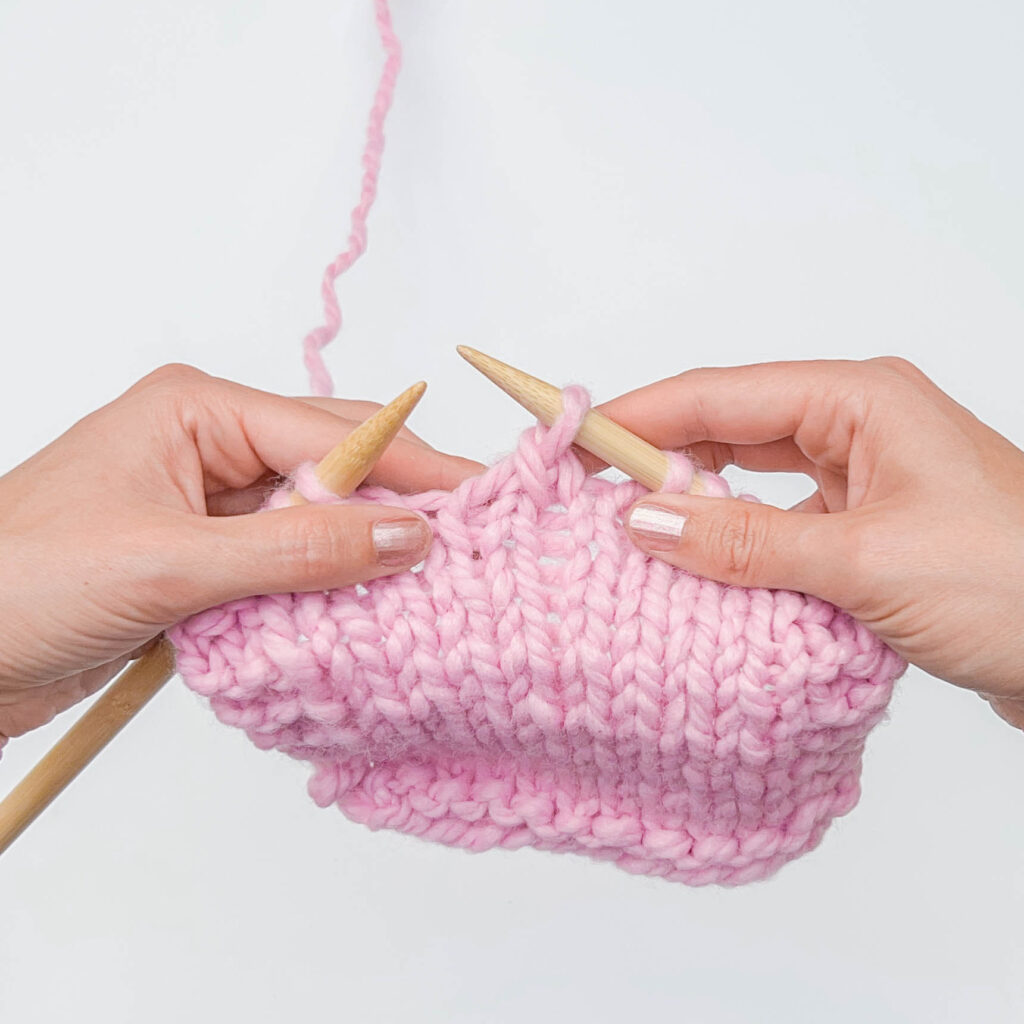
You’ll be making a slip, slip, knitting decrease which is typically abbreviated as SSK! This decrease slants to the left in your knit fabric. Each time you work a SSK knit decrease you are removing a single stitch from your row count.
Make sure that your yarn is at the back of your fabric before working the decrease.
Note: This tutorial was written for right-handed knitters.
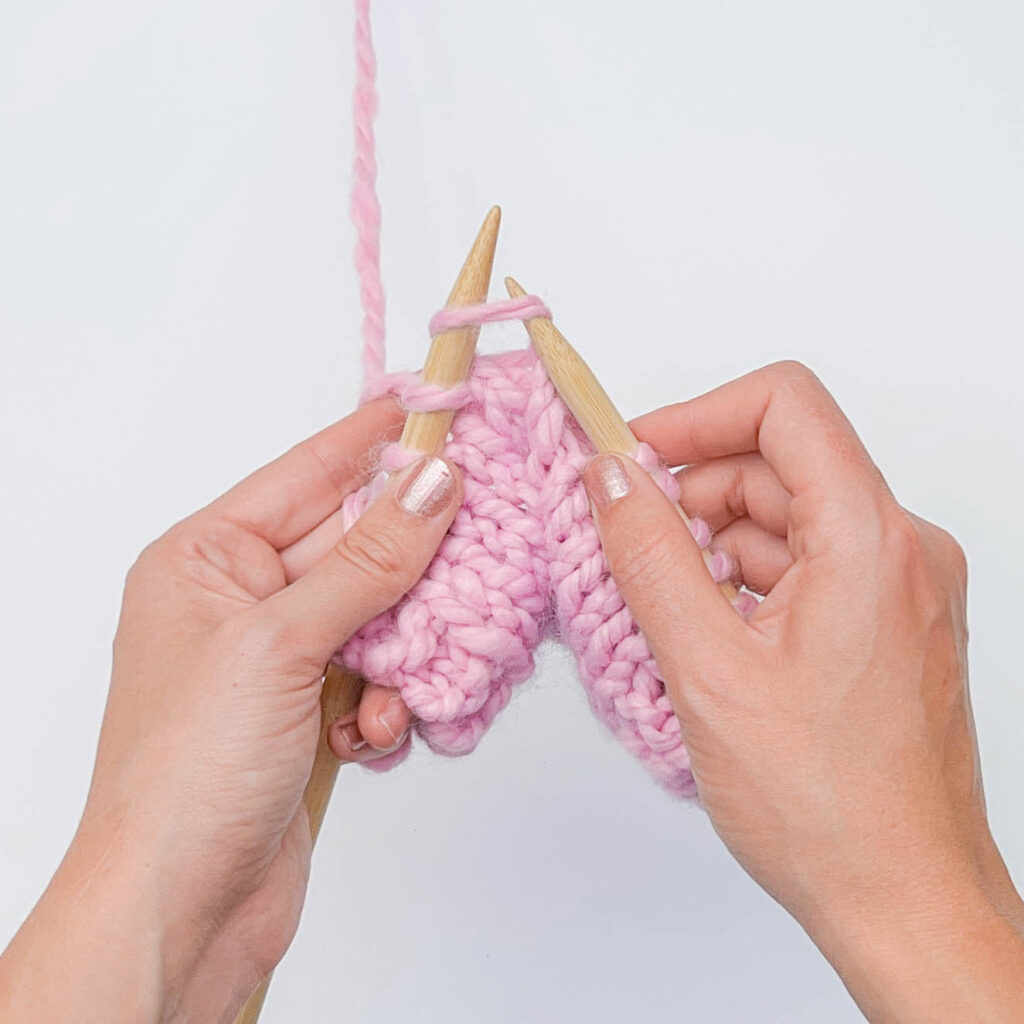
Step 1:
First you’ll be twisting two stitches before decreasing. To twist a stitch, insert your right needle into the next stitch as if to knit (from left to right through the front loop).
Next, slip the stitch off the left needle onto the right needle. One stitch is now twisted!

Step 2:
Repeat Step 1 to slip the second stitch.
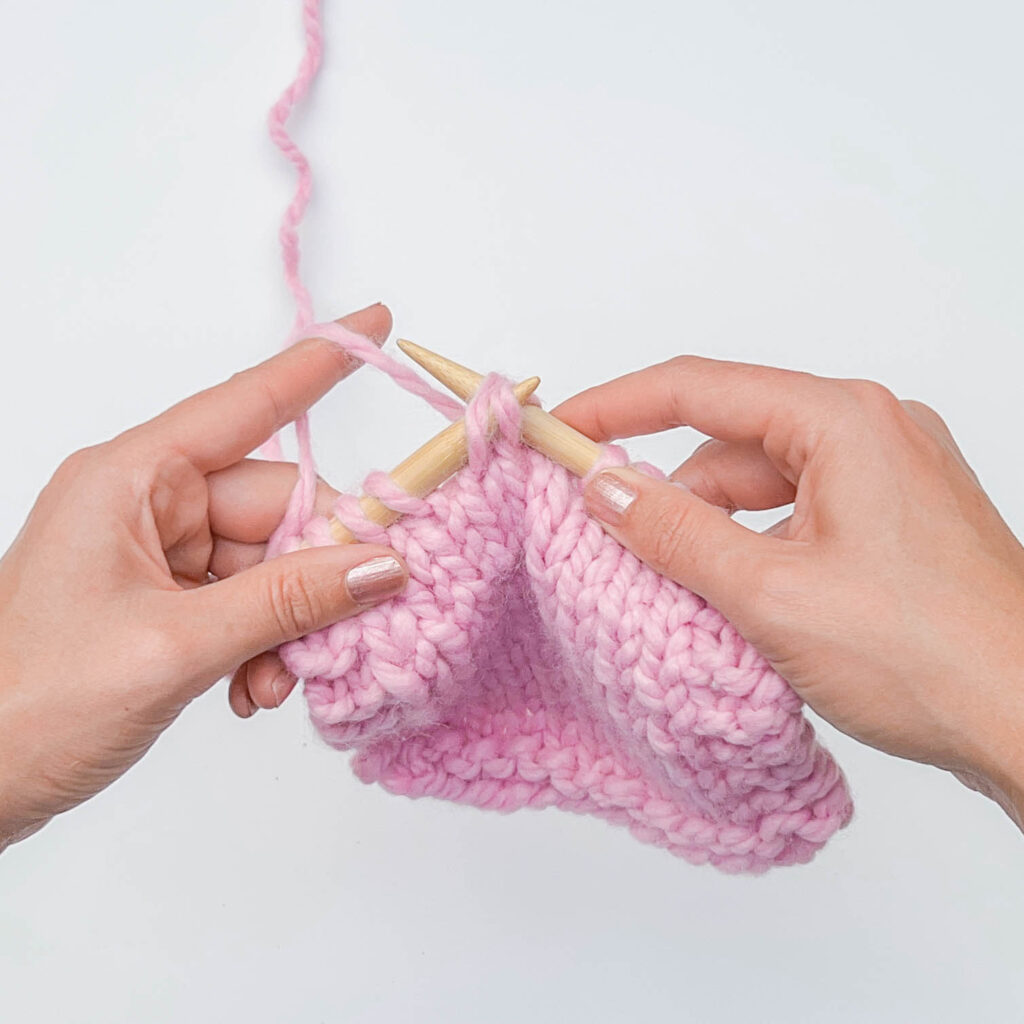
Step 3:
Insert your left needle through the front legs of both twisted stitches on your right needle.
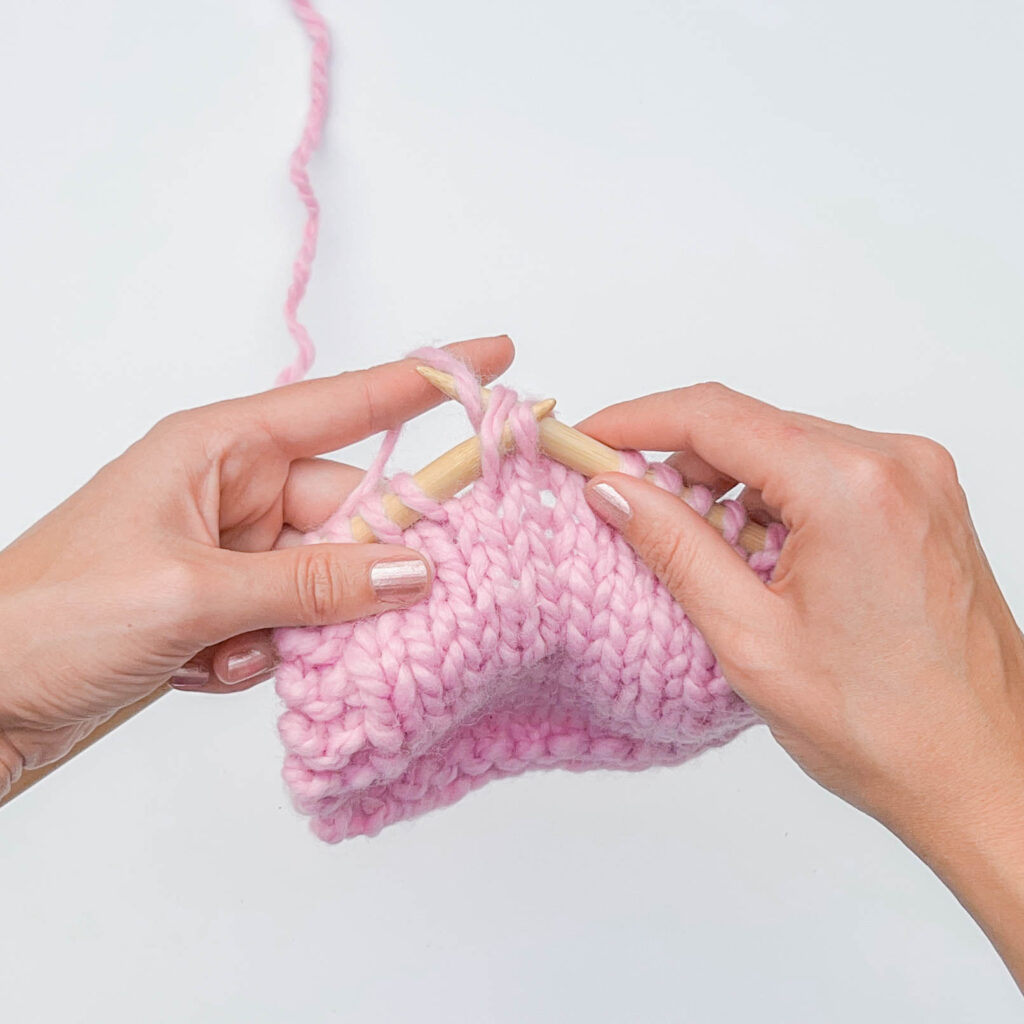
Step 4:
Knit the two twisted stitches together by wrapping the yarn up over the right needle and pulling it through both at the same time.
It might be helpful to pin the twisted stitches to the needle using your right hand in this step so that they stay put as you pull the yarn through.
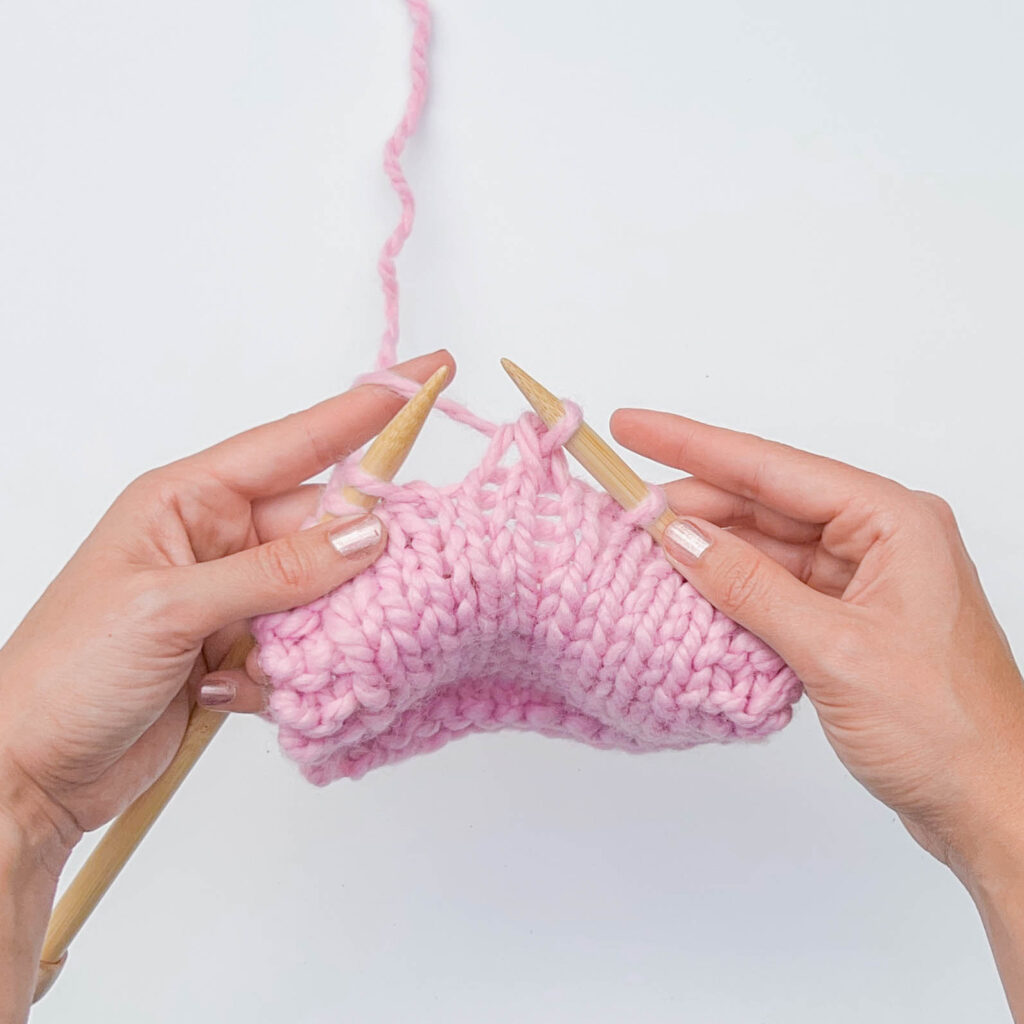
Step 5:
Drop the twisted stitches off the left needle. You’ve now decreased one stitch and created a left leaning slip, slip, knitting decrease stitch!
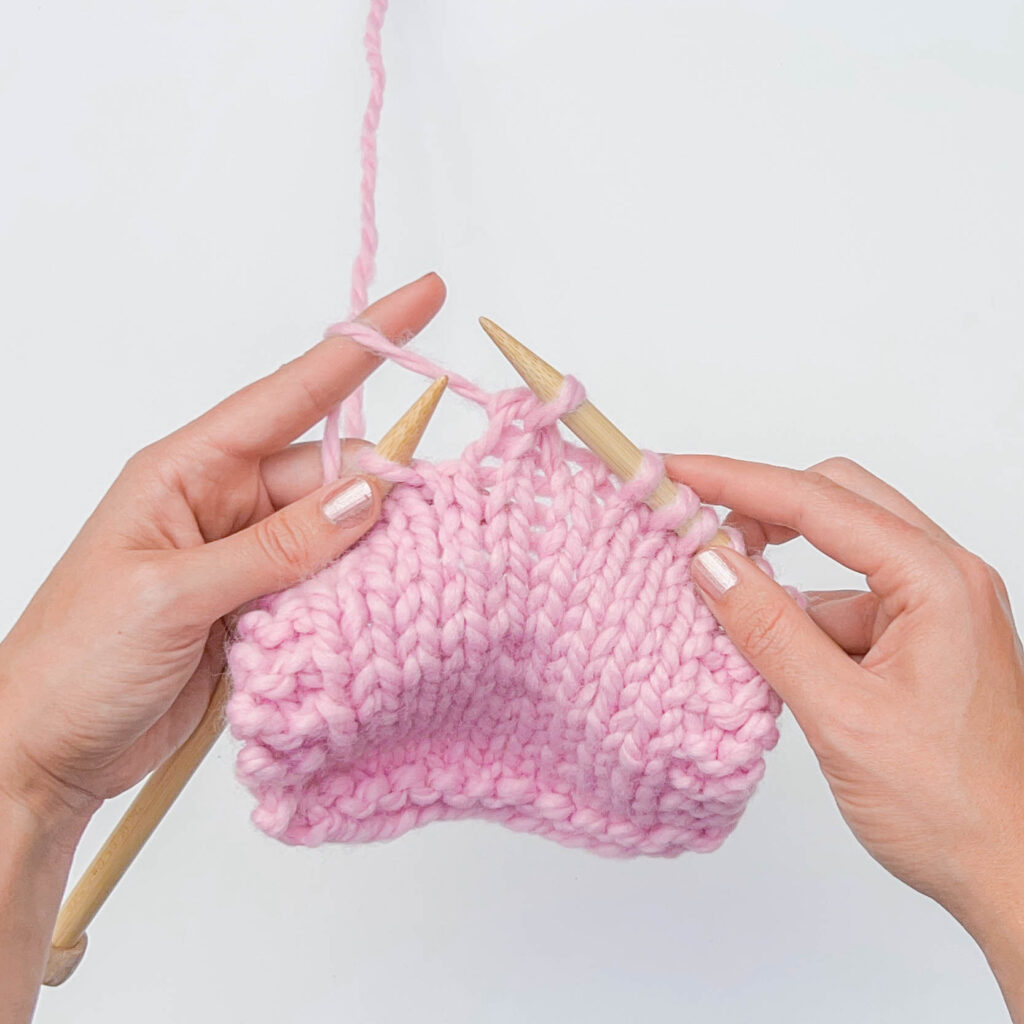
You’ll be making the K2tog knit decrease, as the name suggests, is worked by knitting two stitches together into a single stitch. This decrease slants to the right in your knit fabric. Each time you work a K2tog knit decrease, you are removing a single stitch from your row count.
Note: This tutorial was written for right-handed knitters.

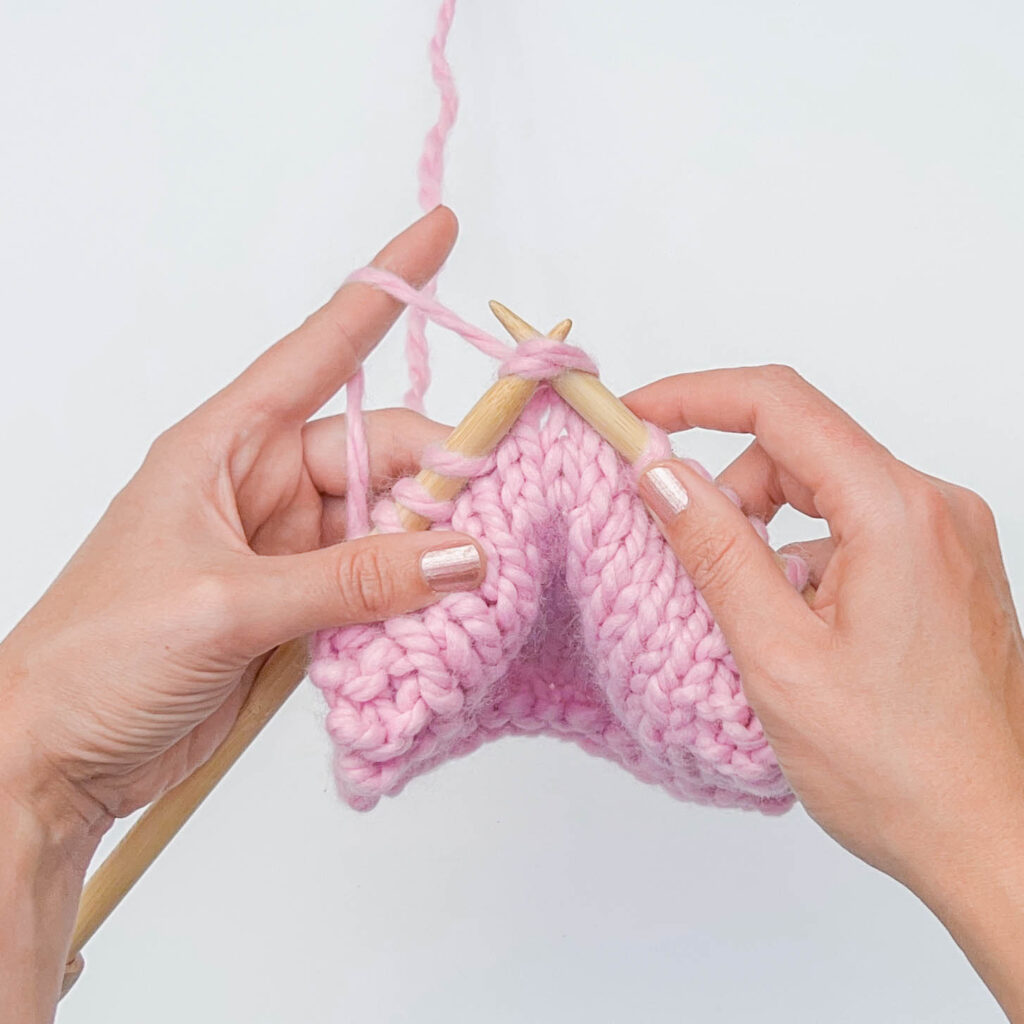
Step 1:
With your yarn in the back, insert your needle through the next two stitches at the same time, from left to right through the front legs of both stitches at once.
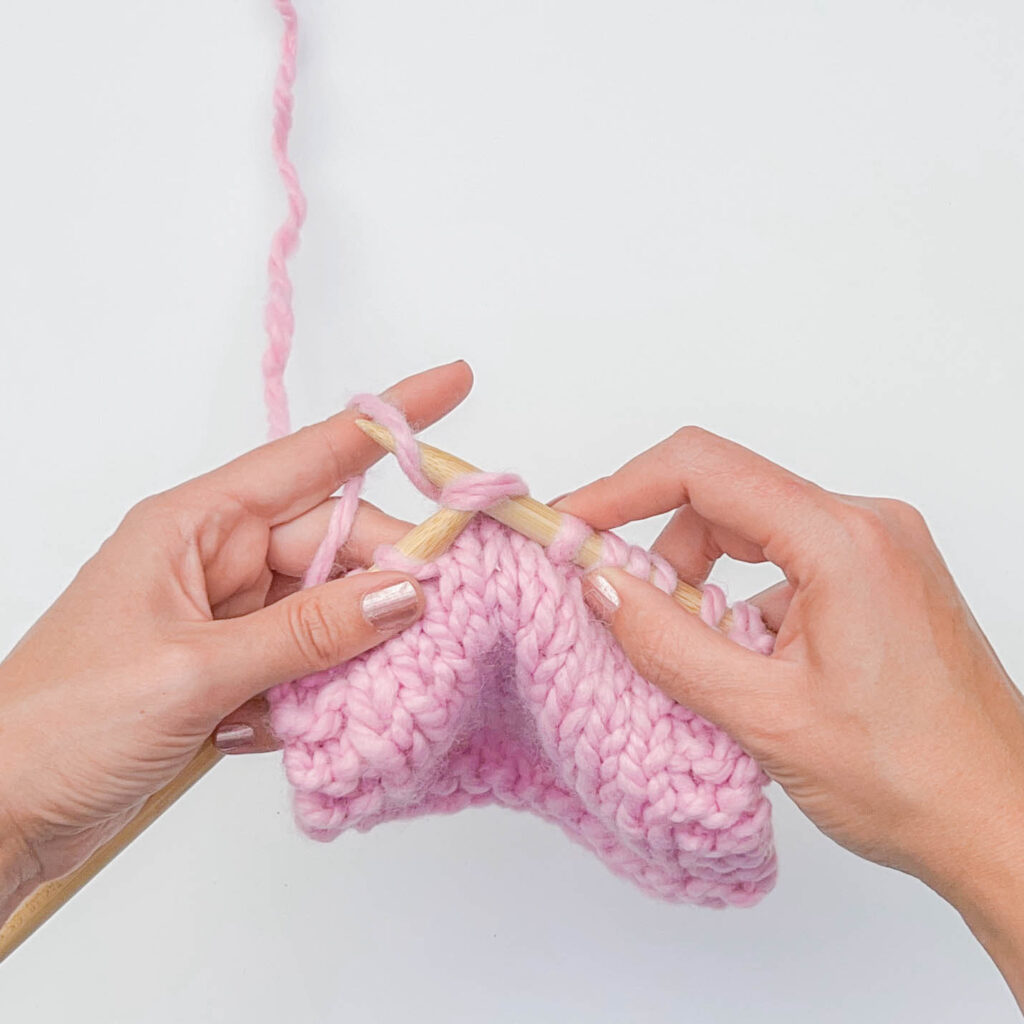
Step 2:
Wrap your yarn up and over the right needle counterclockwise.
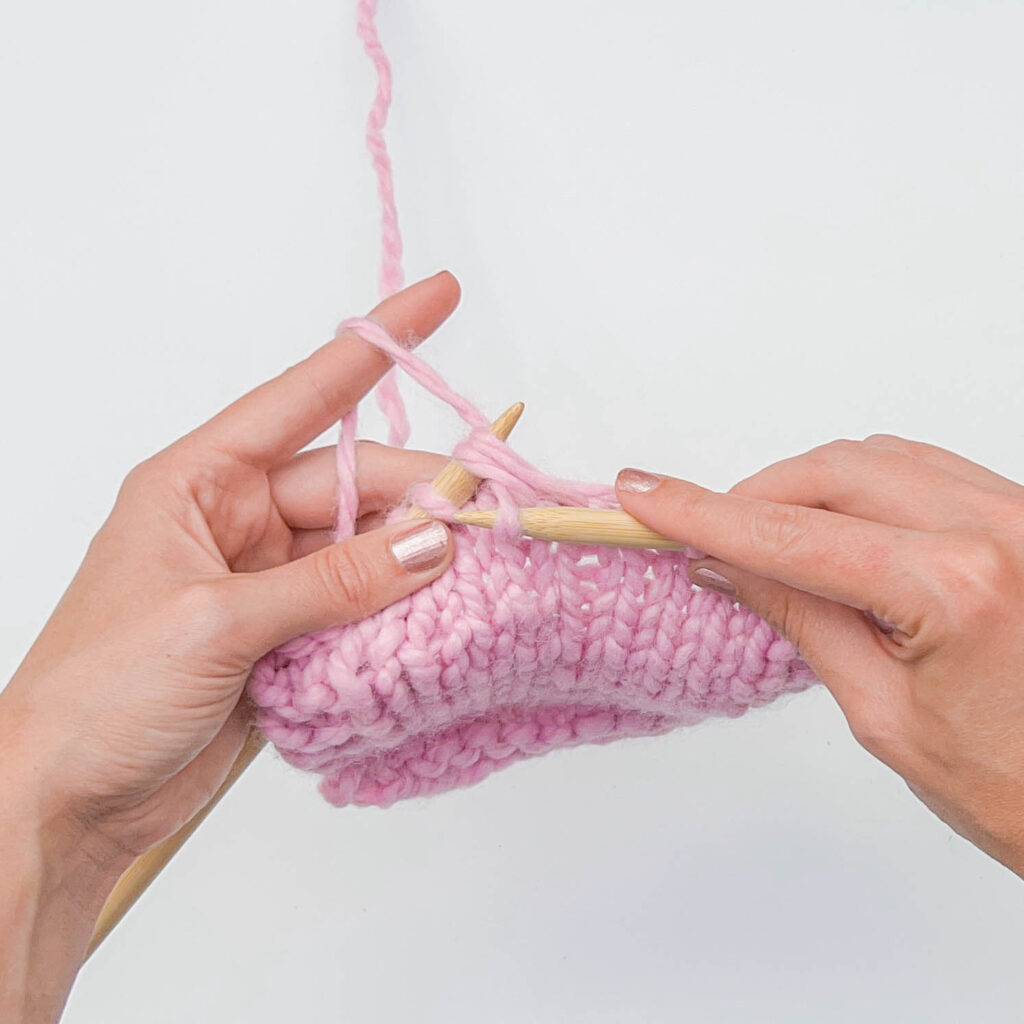
Step 3:
Pull the yarn through both stitches at once by pivoting the right needle tip down along the barrel of the left needle and through the stitches.
It might be helpful to pin the stitches on either needle using your pointer fingers in this step so that they stay put as you knit.

Step 4:
Drop both stitches off the left needle at the same time. You’ve now decreased one stitch and created a right leaning decrease stitch!
K2tog and SSK knit decreases are easy to do! The hardest part of these decreases is remembering which way each one slants.
While a K2tog knit decrease is worked almost identically to a regular knit stitch (so fast, so easy!) SSK knit decreases involve some extra steps to get the stitches positioned correctly. With a little practice, these decreases are easily memorized and will become a go-to decrease method for most projects.
If you’re having trouble keeping track of which direction each decrease leans, or need a quick reference guide, we’ve included a quick at-a-glance guide at the end of this tutorial!
The sharper your needle tips are, the more nimble they are. Sharp points take a lot of frustration out of complex stitches and also makes it less likely to accidentally drop a stitch at the wrong time.
Knitting needle tips taper to a point which means you have about a ¼” of needle that you can slide your stitches to for a extra breathing room. While there’s a slight chance you’ll accidentally drop a stitch when you’re working so close to the needle tips, it’s worth gaining a little maneuverability. Try using your pointer fingers to pin stitches to your needles as you insert the other needle and draw yarn through to keep your stitches from slipping off!



